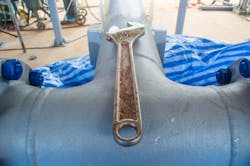The first edition of The Consumer Guide to Magnetic Flowmeters that I co-authored with Walt Boyes was published in 2002. The tabulation of the quantifiable differences in performance between the magnetic flow meters available at the time presented useful information for both end users and manufacturers.
Initial research performed shortly after for The Consumer Guide to Coriolis Mass Flowmeters, also co-authored with Boyes, was another story. When I was about half-way through tabulating a spreadsheet on the performance of every model and size Coriolis mass flow meter available at the time, I noticed that the performance of almost all of them was 0.1 percent of the flow rate for liquids. My concern was that my time had been wasted because most Coriolis mass flow meters had the same performance and no market would be available for the guide. I buried these thoughts (after a short panic attack) and completed the tabulation.
My initial thoughts were unfounded — even though the performance of most Coriolis mass flow meters was 0.1 percent of the rate for liquids — because the zero stability for each model and size was different. The zero stability can be thought of as how well the zero of a Coriolis mass flow meter can be calibrated. This typically automated procedure is initiated with the flow meter full of liquid under zero flow conditions. The error associated with zero stability is a fixed value such as 0.05 kilograms/minute that affects the flow measurement by that amount throughout its operating range. Therefore, zero stability has a greater effect on performance at lower flow rates when performance is expressed as a percentage of the actual flow rate.
After the zero stabilities for each size and model were incorporated into the finalized table, the performance of some of the best flow meters was as much as 10 times superior to the worst performers in a number of models and sizes. All Coriolis mass flow meters were not created equal.
David W. Spitzer is a regular contributor to Flow Control magazine and a principal in Spitzer and Boyes LLC offering engineering; seminars; strategic, marketing consulting; distribution consulting; and expert witness services for manufacturing and automation companies. Spitzer and Boyes is also the publisher of the Industrial Automation INSIDER. Spitzer has more than 40 years of experience and has written more than 10 books and 300 articles about flow measurement, instrumentation and process control. He may be reached at 845-623-1830 or at spitzerandboyes.com.
About the Author
David W. Spitzer
David W Spitzer’s new book Global Climate Change: A Clear Explanation and Pathway to Mitigation (Amazon.com) adds to his over 500 technical articles and 10 books on flow measurement, instrumentation, process control and variable speed drives. David offers consulting services and keynote speeches, writes/edits white papers, presents seminars, and provides expert witness services at Spitzer and Boyes LLC (spitzerandboyes.com or +1.845.623.1830).
